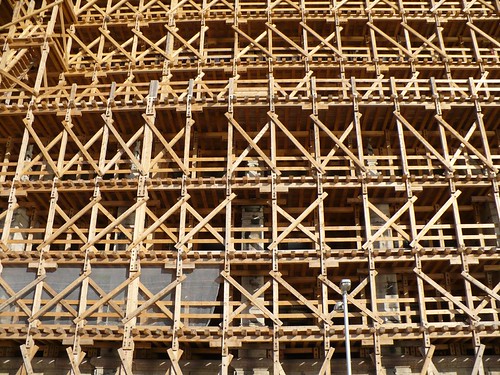In Forbes,
Michael Repogle writes an article on the problems with auto travel increases even in the face of new technologies.
A key arena for innovation will be finding ways to grow the world's communities and economies while at the same time reducing how much driving the population is doing. The forecast growth in motor vehicle traffic--60% over the next two decades in the U.S. and many times that in China and India--threatens to overwhelm gains won through increasing vehicle fuel efficiency.
Which is the main rub, that VMT will increase so much that it will overwhelm any solutions we come up with such as everyone having a Prius type gas sipper. The only way to solve this issue is with more compact development and better transit.
The key to success is to keep car traffic from growing to unsustainable levels to begin with. A 2007 Urban Land Institute study found that shifting two-thirds of new U.S. growth to compact neighborhoods where cars are not the only transportation option would save 85 million tons of CO2 annually by 2030. That figure is more than the combined annual emissions of over 16 million regular passenger cars.
While Michael claims the transit solution is BRT, I think he's been drinking too much of the Bill Vincent cool-aid. In keeping with most BRT peddlers out there, he spreads the rumor in a major print medium that BRT is
cheaper than LRT. With most new BRT lines in the United States built as hybrid buses instead of trolleybuses, and just operating as express buses they are not helping the problem either. In suburban areas and less congested routes BRT will be a major part of the solution, but in urban areas, it is a necessity that we build rail lines that can have multiple car consists and have major capacity. The Orange Line in Los Angeles which is already at
capacity and takes 15 minutes longer to finish the same distance as the Gold Line LRT, even with its speed limits. The LACMTA is looking to expand it but there is hardly room for more people.
The thing that bothers me most is what if a lot of people need to use transit in cities? On some lines, particularly in San Francisco, there is a capacity problem. A
recent study to open up Muni for free rides showed how overwhelmed the system would be if a substantial number of new people hopped on due to free rides. This scares me a bit. New York City has been handling massive increases quite well but even they need to expand and are in the process of building new subway tunnels. If we ever have a big shock and a ton of people hop on transit, there are going to be problems. And not having the capacity of a subway system spine here, it will show the limits of buses as the
only solution as peddled by many rubber tire advocates. Buses will always be the bones of a transit system, but our spine should have capacity to move more people than a 60 foot bus.


